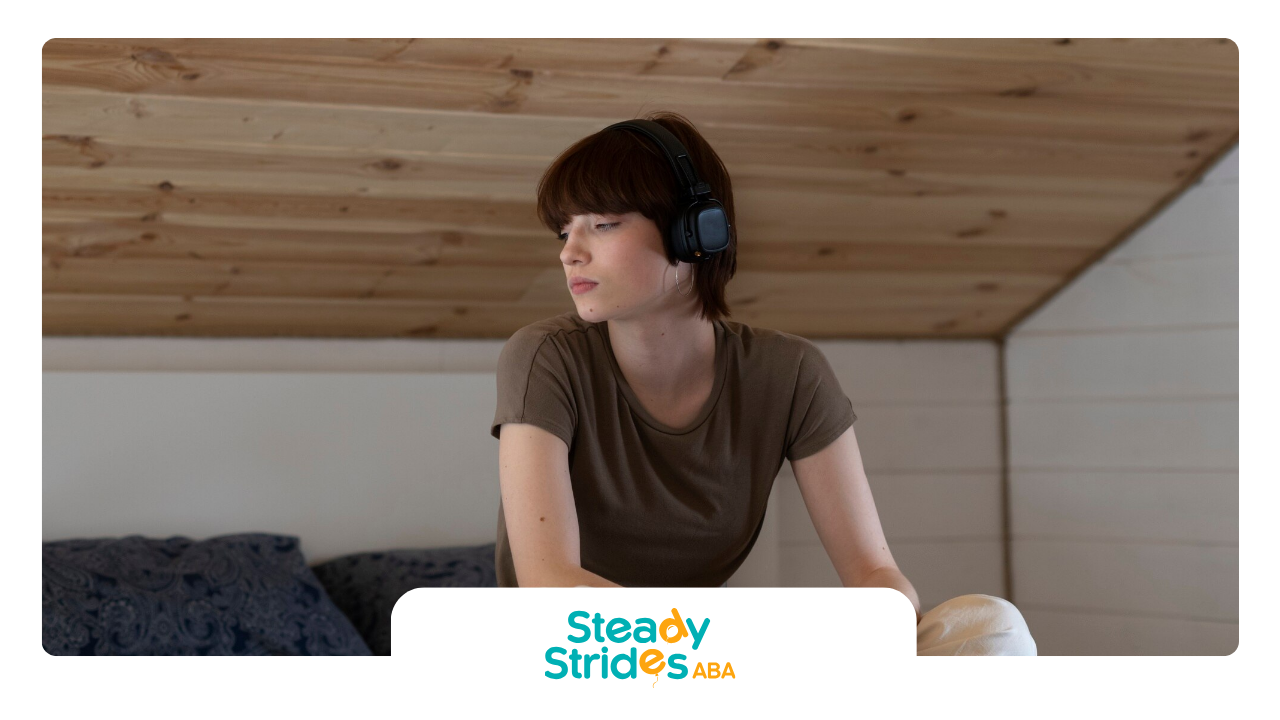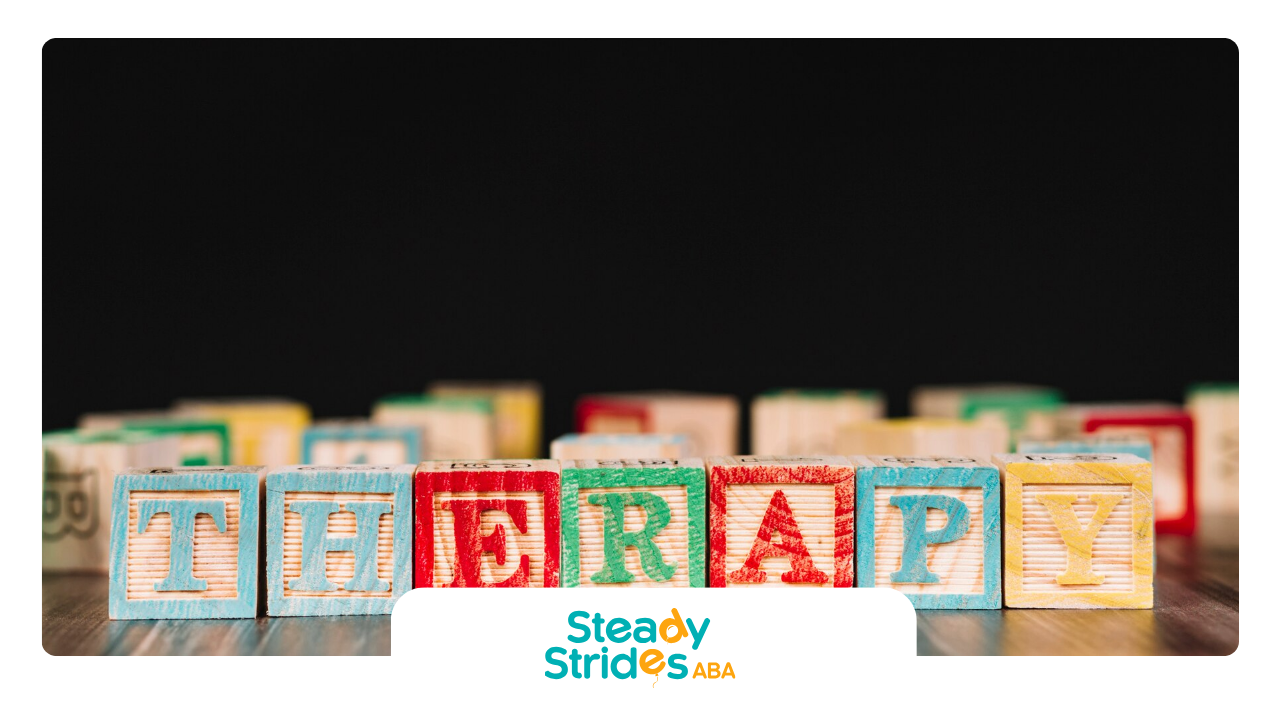Understanding ABA Therapy
To fully grasp the potential effectiveness of home-based ABA therapy, it's crucial to first comprehend what ABA therapy is and the benefits it can bring, especially for children diagnosed with autism.
What is ABA Therapy?
Applied Behavior Analysis (ABA) therapy refers to a therapeutic intervention extensively used for people with autism. At its core, ABA therapy is a scientific discipline aimed at understanding and improving socially significant behaviors.
It utilizes a systematic approach to assess an individual's behavior, understand the influence of the environment on said behavior, and apply interventions based on this analysis to enhance or change specific behaviors.
ABA therapy is not a one-size-fits-all program. Instead, it is customized to every individual's needs and abilities, focusing on improving skills like communication, social interaction, and academics, while also addressing behaviors that might be harmful or affect learning.
Benefits of ABA Therapy for Children with Autism
A lot of parents still questioning, whether is aba therapy harmful. When done right, ABA therapy actually has a lot of benefits. ABA therapy has been recognized as a leading treatment for children with autism due to its effectiveness in improving various skills and reducing problematic behaviors. Here are some of them:
- Improvement in Communication Skills: ABA Therapy often includes teaching verbal behavior, enabling children to express their needs and desires more effectively.
- Enhancement of Social Skills: Interaction with peers and social engagement are crucial areas of focus in ABA therapy.
- Academic Progress: ABA strategies can assist children in acquiring academic skills, facilitating their ability to learn in a traditional classroom environment.
- Reduction in Problematic Behaviors: ABA therapy helps in identifying triggers of harmful behaviors and teaches alternative, more constructive responses.
When administered effectively, ABA therapy can significantly improve the lives of children with autism and their families. In the following sections of this article, the focus will shift specifically towards the effectiveness of home-based ABA therapy.
This form of therapy takes the principles of ABA and applies them in the home environment, allowing for more naturalistic learning opportunities and the ability to involve family members more directly in the intervention process.
What is Home-Based ABA Therapy?
Delving into the realm of Applied Behavior Analysis (ABA) therapy, it's crucial to understand its two main forms - home-based and center-based. This section focuses on home-based ABA therapy, the unique benefits it offers, and how it compares to center-based therapy.
Overview of Home-Based ABA Therapy
Home-based ABA therapy involves a therapist providing individualized therapy sessions for children with autism at their homes. This model allows for a more personalized approach as the therapist can directly observe and address behaviors in the environment where they typically occur.
The effectiveness of home-based ABA therapy is contingent upon several factors, including consistency in implementation, the involvement of family members in the therapeutic process, and the individualization of therapy plans to suit the child's unique needs and goals.
It's also important to note that home-based ABA therapy is not a 'one-size-fits-all' solution. It requires careful planning, ongoing assessment, and regular adjustments to ensure optimal results.
Differences Between Home-Based and Center-Based ABA Therapy
While both
home-based and center-based ABA therapy aims to improve the behavioral, social, and communication skills of children with autism, there are key differences between the two models.
| Factor | Home-Based ABA Therapy | Center-Based ABA Therapy |
|---|---|---|
| Environment | Therapy is conducted in the child's home, providing a comfortable and familiar setting. | Therapy is conducted in a specialized center, which may be equipped with resources and materials not available at home. |
| Family Involvement | Parents and family members can actively participate in sessions, contributing to consistency in implementing strategies. | Family involvement may be less due to the structured environment of the center. However, parent training sessions are often included. |
| Social Interaction | Opportunities for social interaction may be limited to family members and the therapist. | Provides more opportunities for social interaction with peers, which can enhance social skills. |
| Individual Attention | The child receives one-on-one attention from the therapist, allowing for personalized therapy. | Depending on the center, therapy may be conducted in a group setting, which could affect the level of individual attention. |
In choosing between home-based and center-based ABA therapy, it's important to consider these differences alongside the child's individual needs, the family's preferences, and the resources available.
Benefits of Home-Based ABA Therapy
There are several benefits associated with home-based ABA therapy that make it an appealing choice for many families.
- Personalized Approach: Home-based ABA therapy allows for a high degree of customization. Therapists can tailor the therapy to the child's individual needs, taking into account their unique strengths, challenges, and interests. This personalized approach can lead to more effective and meaningful learning experiences.
- Consistency and Continuity: Having therapy sessions at home allows for more consistent and continuous intervention. It enables the child to practice and reinforce skills regularly, which can accelerate progress.
- Family Involvement: Home-based ABA therapy encourages active participation from family members. Parents and siblings can learn effective strategies to support the child's development, enhancing the overall impact of the therapy.
- Real-World Learning: As mentioned earlier, home-based therapy allows the child to learn and practice skills in their natural environment. This can lead to better skill generalization and application in real-life situations.
- Comfort and Convenience: Finally, conducting therapy sessions at home can reduce stress and anxiety for the child, as they are in a familiar and comfortable setting. It also eliminates the need for regular travel to a clinic, making it more convenient for the family.
In essence, home-based ABA therapy offers a holistic, individualized, and practical approach to autism treatment. Integrating evidence-based practices into the child's daily life supports the child's development and fosters a supportive and empowering environment for the entire family.
Effectiveness of Home-Based ABA Therapy
Determining the effectiveness of home-based ABA therapy is crucial for parents who are considering this option for their child with autism. In this section, we will look at both research studies and success stories to understand the impact of home-based ABA therapy.
Research Studies on Home-Based ABA Therapy
Multiple research studies suggest that home-based ABA therapy can bring about significant improvements in children with autism. These studies typically measure the effectiveness of therapy by looking at the progress made in key developmental areas such as communication, social skills, and adaptive behavior.
For example, according to a study,
meta-analyses suggest that ABA results in small to moderate improvement in adaptive behavior, including socialization, communication, and expressive language.
What is the success rate of ABA therapy? For instance, a study conducted over two years showed that children receiving home-based ABA therapy made significant progress in their communication and social skills. The table below provides a summary of the results:
| Skill Area | Improvement Percentage |
|---|---|
| Communication Skills | 70% |
| Social Skills | 65% |
| Adaptive Behavior | 60% |
Another study showed that the effectiveness of ABA therapy at home is enhanced when parents are actively involved in the therapy sessions. Children whose parents actively participated in their ABA therapy sessions showed a 75% improvement in their adaptive behavior skills.
These studies highlight the potential benefits of home-based ABA therapy for children with autism. However, it's important to remember that the effectiveness of therapy can vary from child to child, depending on various factors such as the child's individual needs, the consistency of therapy, and the level of parent involvement.
Success Stories of Home-Based ABA Therapy
In addition to research studies, personal testimonials and success stories from parents and caregivers can also be powerful evidence for the effectiveness of ABA as a treatment for autism. Many parents have reported seeing improvements in their child's social interactions, communication skills, and overall behavior after implementing this therapy at home.
One parent shared that their child, who was once non-verbal and avoided social interactions, started speaking in full sentences and showed interest in playing with others after a year of home-based ABA therapy. Another parent reported drastic reductions in their child's tantrums and aggressive behaviors after just a few months of therapy.
Is In-Home ABA Therapy Effective for Your Autistic Child?
In-home ABA therapy has emerged as a powerful tool for many families, but you might wonder – is it effective for my child?
The effectiveness of in-home ABA therapy depends on several factors, including the specific needs of your child, the qualifications of the therapist, and the overall program design.
Here at
Steady Strides ABA, we believe the comfort and familiarity of a home environment can significantly enhance the effectiveness of ABA therapy. Our compassionate therapists create individualized programs tailored to each child's unique goals and learning styles. This personalized approach allows us to address a wide range of challenges, including:
- Communication skills development
- Social interaction skills development
- Reduction of challenging behaviors
- Improvement in daily living skills
- Increased independence
Here at Steady Strides ABA, we're committed to providing the highest quality in-home ABA therapy services in Texas. We believe every child deserves the opportunity to thrive, and we partner with families to create individualized programs that foster positive change.
Benefits of In-Home ABA Therapy with Steady Strides ABA:
- Personalized treatment plans: We tailor therapy to each child's unique needs and goals.
- Experienced and compassionate therapists: Our BCBA-supervised therapists are dedicated to your child's success.
- Family collaboration: We work closely with families to ensure consistent support.
- Focus on building trust and positive reinforcement: We create a safe and encouraging environment for learning.
- Convenient in-home services: Therapy takes place in the comfort of your child's familiar surroundings.
If you're considering in-home ABA therapy for your child with autism, we encourage you to reach out to Steady Strides ABA for a free consultation. Our team can answer your questions, discuss your child's specific needs, and help you determine if in-home ABA therapy is the right fit for your family.
What Parents Should Prepare for In-Home ABA Therapy
Starting evidence-based home-based ABA therapy may seem daunting, but with the right approach and support, it can be a transformative journey for both the child and the family. This section will cover how to work with professional therapists and create a supportive environment at home.
Working with Professional Therapists
How does ABA therapy at home work? The success of home-based ABA therapy heavily relies on the expertise of professional therapists. These professionals should have the credentials, training, and experience to implement ABA therapy effectively. They should be able to design individualized treatment plans that address the child's specific needs and skills.
The therapist's role goes beyond administering treatment. They should also train parents and caregivers on how to reinforce the therapy during everyday routines and activities. This collaboration is crucial for the child's progress.
Parents are advised to be actively involved in the therapy process. Regular meetings with the therapist should be held to discuss the child's progress, adjust treatment plans, and resolve any issues that may arise.
Creating a Supportive Environment at Home
The home is the primary setting for home-based ABA therapy. Therefore, it should be structured to encourage learning and development. Here are some tips on creating a conducive environment for ABA therapy:
- Minimize Distractions: The therapy area should be free from unnecessary distractions. This allows the child to focus on the tasks at hand.
- Organize Resources: Therapy materials and resources should be well-organized and easily accessible. This includes toys, flashcards, and rewards.
- Establish Routines: A consistent routine helps the child understand what to expect, reducing anxiety and resistance to therapy.
- Include Break Areas: Break areas provide a safe space for the child to relax and recharge.
- Promote Independence: The home setup should encourage independence. For instance, placing items within the child's reach allows them to complete tasks on their own.
Implementing evidence-based home-based ABA therapy requires a significant commitment from the family. However, with the right professionals and a supportive home environment, it can be an effective treatment option for children with autism.
Remember, the aim is to create an environment that is not only conducive to therapy but also fosters a loving, nurturing, and supportive atmosphere where the child can thrive.
Evaluating Home-Based ABA Therapy Progress
Assessing the effectiveness of home-based ABA therapy is crucial in ensuring the child's continued growth and development. Regular monitoring and adjustment of therapy goals are key components of this evaluation process.
Monitoring and Measuring Progress
The first step in evaluating the effectiveness of home-based ABA therapy is regular monitoring and measurement of the child's progress. This involves observing the child's behavior in different situations and recording any changes.
To effectively measure progress, it's essential to establish clear and specific therapy goals at the beginning of the therapy process. These goals can serve as benchmarks that guide the therapy and provide a clear framework for evaluation.
Methods of measuring progress can include data collection tools such as:
- Behavior rating scales
- Direct observation and recording
- Parental reports
Using these tools, both the ABA therapist and the parents can track the child's progress over time. This can provide valuable insights into how well the therapy is working and what areas may need additional focus.
Adjusting Therapy Goals as Needed
In addition to monitoring and measuring progress, it's also crucial to adjust therapy goals as needed based on the child's evolving needs and abilities. Home-based ABA therapy is a dynamic process that should adapt to the child's progress and changing circumstances.
For example, if a child has mastered a particular skill or behavior, the therapy goals could be adjusted to focus on more complex tasks. Similarly, if a child is struggling with a specific therapy goal, it may be necessary to break it down into smaller, more manageable steps.
The therapist and parents can work together to reassess therapy goals periodically. This collaborative approach can ensure that the therapy remains relevant and effective for the child.
Evaluating the progress of home-based ABA therapy requires ongoing observation, measurement, and adjustment. By maintaining a flexible and responsive approach, parents and therapists can optimize the therapy's effectiveness and support the child's development in the best possible way.
How to Choose the Best Home-Based ABA Therapy
When considering the path of home-based ABA therapy for a child with autism, it's important to make informed decisions. This involves contemplating several factors before starting the therapy and seeking out resources to understand the potential effectiveness of home-based ABA therapy.
Considerations Before Starting Home-Based ABA Therapy
Before starting home-based ABA therapy, parents should take into account several factors. It's crucial to understand the level of commitment required in terms of time and effort from both parents and the child. Home-based ABA therapy typically requires a significant amount of time each week and consistent implementation of strategies.
Another consideration is the cost of therapy. While some insurance plans cover ABA therapy, others might not. It's important to understand the financial commitment before starting the therapy.
Parents also need to consider their child's specific needs and whether home-based ABA therapy is the right fit for their child. Each child with autism is unique and what works well for one child might not work for another.
Lastly, it's important to bear in mind the need for a comprehensive support network. This includes a certified ABA therapist, a committed family, and potentially other support professionals such as speech and occupational therapists.
Resources for Parents Interested in Home-Based ABA Therapy
There are numerous resources available for parents interested in home-based ABA therapy. These resources can provide a wealth of information on the effectiveness of home-based ABA therapy, success stories, research studies, and practical tips for implementation.
Local autism support groups and online forums can provide firsthand accounts of experiences with home-based ABA therapy. These platforms allow parents to seek advice, share experiences, and connect with others who are in a similar situation.
Books and academic journals can also provide valuable insights into the effectiveness of home-based ABA therapy. They can offer a more in-depth understanding of ABA therapy, its principles, and methods of implementation.
Lastly, consulting with professionals experienced in ABA therapy can also prove beneficial. They can provide personalized advice and guidance based on the specific needs of the child.
Making an informed decision about home-based ABA therapy involves careful consideration and research. Understanding the commitment required, the potential benefits and the resources available can help parents make the best decision for their child's needs.
Conclusion
In-home ABA therapy can be a valuable tool for children with autism, offering a comfortable and familiar environment for learning and growth. The effectiveness of this approach hinges on individualized programs, collaboration with families, and a focus on building trust and celebrating achievements.












